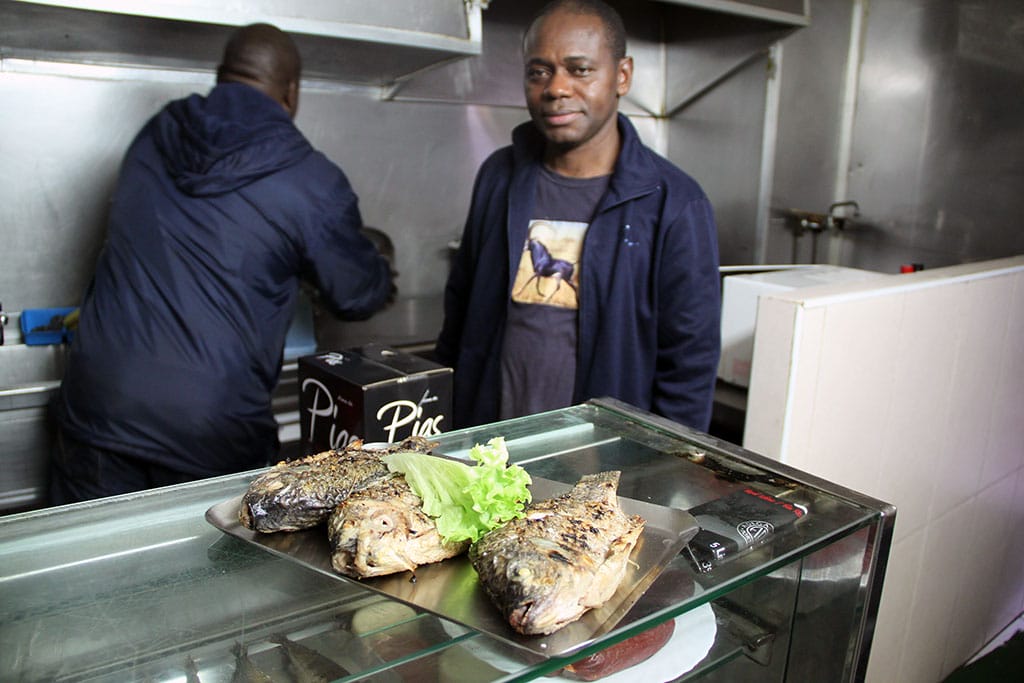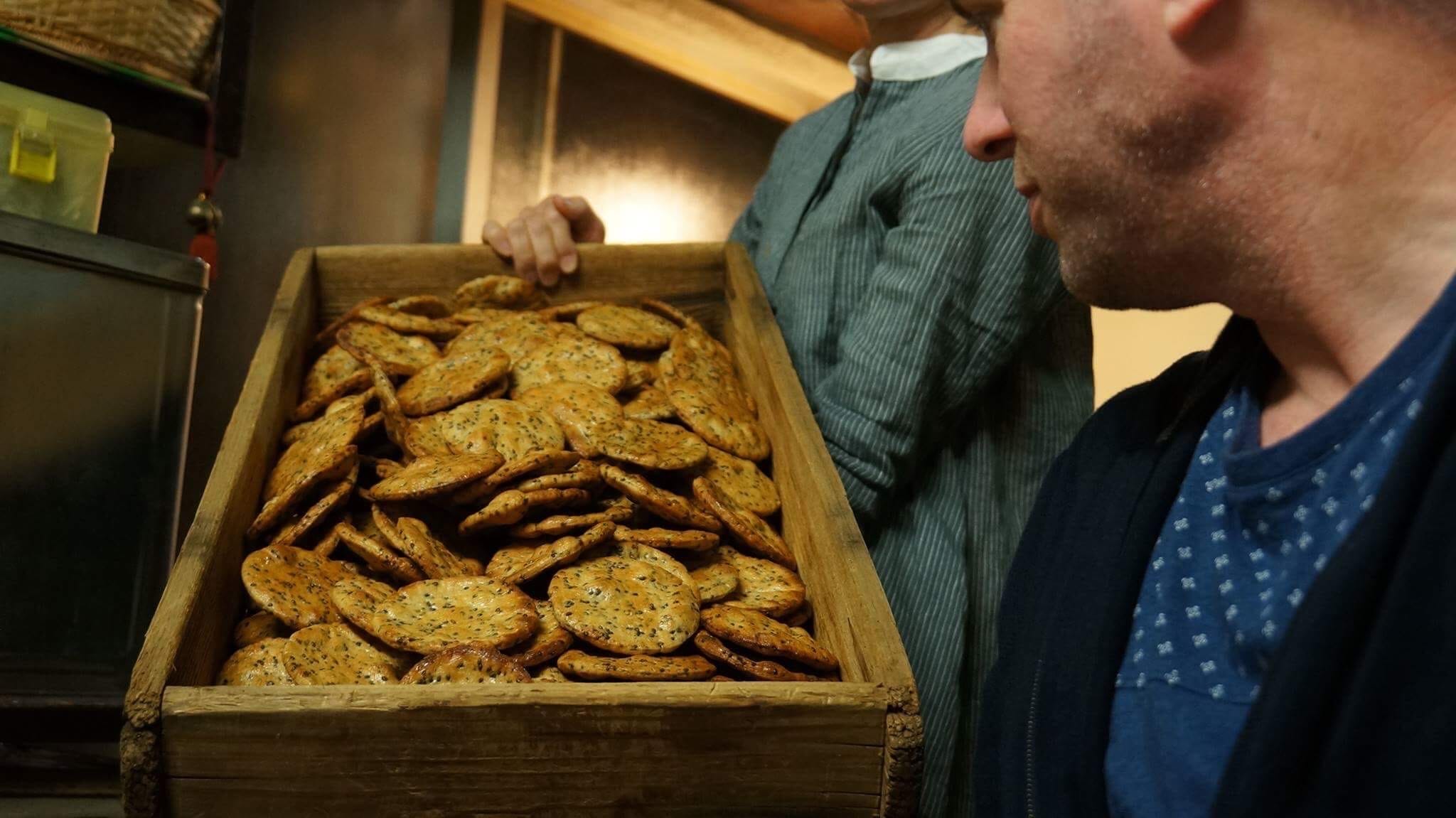When a streetcar ran down Queens’ Metropolitan Avenue in the first half of the 20th century, soda fountains like Eddie’s Sweet Shop were commonplace in big cities and small towns across America. Today, this hundred-year-old corner gem on Metropolitan in the leafy, Tudor-style enclave of Forest Hills is one of the last of its kind left in the country, and it certainly shows its vintage.
On summer afternoons, Eddie’s still fills up with crowds of happy Queens kids, and the diversity of the clientele reminds you that fortunately, it’s not the 1920s anymore. The shop itself, though, is practically unchanged – every piece of equipment behind the counter, from the shiny Frigidaire to the tiny metal cabinet hand-painted with the words “hot fudge,” could be from a museum. “The fridge is one of the first electric fridges,” owner Vito Citrano explains. “It’s about 80 years old, and some of the dishware is just as old.” The neon “SODA” sign out front, the subway-tile floors, and the worn, spindly, less-than-comfortable wooden stools that line the counter also suggest another era. Vito, whose father Giuseppe bought the place in 1968, says that it’s getting harder to maintain all of these details, but he views Eddie’s as “part of history,” a landmark that’s his job to maintain. The soda fountain is an American tradition he reveres, and nothing is more important than the frozen treats themselves.
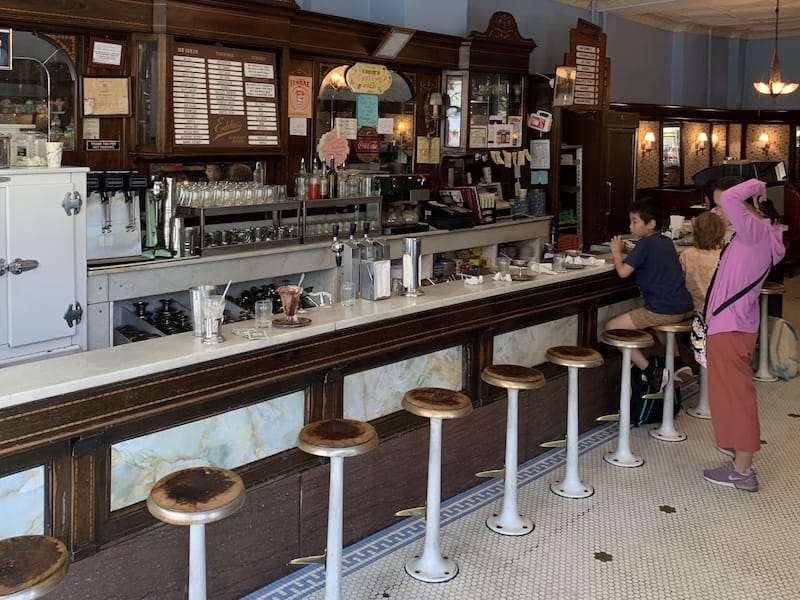
Ice cream concoctions like the banana split or the hot fudge sundae are classics here, and you’ll see one at almost every table of kids. With around 20 ice cream flavors and a wide array of toppings, you can also build your own sundae – and you’ll want it with whipped cream. The homemade whipped cream at Eddie’s, spooned out of a big container, is both fluffy and substantial, and almost as tasty as the ice cream itself. Some old-fashioned soda fountain specialties are favorites among an older crowd who can’t find them anywhere else: Ice cream sodas, consisting of seltzer mixed with ice cream, syrup and milk in a tall glass, are like carbonated milkshakes. Eddie’s also serves a great rendition of the New York egg cream, a classic treat made with neither egg nor cream, but with seltzer, syrup and milk. Its inexplicable name may have originated with the Yiddish word ech – genuine or real – rather than “egg.” All of the syrups are made in-house, and as in the fountains of yore, you can get a root beer or cherry coke mixed to order with syrup and seltzer. When we arrived one afternoon, Vito was busy making ice cream and syrups in the basement while the orders kept flowing in upstairs. It’s not the easiest way to do things, but that’s exactly what gives Eddie’s its charm.
 Eddie’s is a genuine period piece of a soda fountain, but its story is somewhat shrouded in myth. For one thing, there was never any “Eddie.” Although the shop has been open since at least 1925, the name only dates back to the ‘60s, when Giuseppe Citrano took over the business. “Eddie’s is just the name my Dad decided to call the store,” Vito says. “It was Witt’s before us.” Exactly what year Witt’s was founded is unclear, but it was certainly in the 1910s or 20s. By the time the Citrano family took over, the ice cream parlor already had serious nostalgia value, so they didn’t change a thing. Vito grew up in the store, learning the ice cream business from his father, who had immigrated from Italy. Although he’s worked some other jobs in his time, he always felt the pull of Eddie’s. “You have an Italian dad, you work in the family business,” he says.
Eddie’s is a genuine period piece of a soda fountain, but its story is somewhat shrouded in myth. For one thing, there was never any “Eddie.” Although the shop has been open since at least 1925, the name only dates back to the ‘60s, when Giuseppe Citrano took over the business. “Eddie’s is just the name my Dad decided to call the store,” Vito says. “It was Witt’s before us.” Exactly what year Witt’s was founded is unclear, but it was certainly in the 1910s or 20s. By the time the Citrano family took over, the ice cream parlor already had serious nostalgia value, so they didn’t change a thing. Vito grew up in the store, learning the ice cream business from his father, who had immigrated from Italy. Although he’s worked some other jobs in his time, he always felt the pull of Eddie’s. “You have an Italian dad, you work in the family business,” he says.
These days, an enduring ice cream parlor like Eddie’s brings in all kinds, from loyal older neighborhood characters with a sweet tooth to kids on their way home from the Kew-Forest School or PS101. You’ll occasionally overhear newcomers asking if they have flavors like salted caramel, mango, or rocky road – they don’t. Eddie’s is a taste of another time, and that’s just how Vito, and his many loyal customers, like it.
This article was originally published on June 25, 2019.
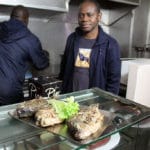 February 25, 2016 Palanca Gigante
February 25, 2016 Palanca Gigante
Update: This spot is sadly no longer open.
Palanca Gigante is an Angolan tasca in […] Posted in Lisbon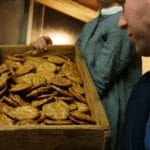 October 23, 2017 Fresh From the Oven in Tokyo
October 23, 2017 Fresh From the Oven in Tokyo
Making senbei (Japanese rice crackers) from scratch is a very labor intensive process, […] Posted in Tokyo August 18, 2014 Tang Palace
August 18, 2014 Tang Palace
If you find yourself in the waiting area at Tang Gong (an hour-long inevitability if you […] Posted in Shanghai
Ike AllenIke Allen
Published on July 19, 2021
Related stories
Visit locations like this on our Lisbon Food Tours!
February 25, 2016
LisbonUpdate: This spot is sadly no longer open. Palanca Gigante is an Angolan tasca in multicultural Mouraria, Lisbon’s medieval downtown district. The restaurant is named after a critically endangered species of antelope (the palanca negra gigante, or giant sable antelope) that was adopted as an Angolan national symbol after that country’s independence from Portugal in…
October 23, 2017
TokyoMaking senbei (Japanese rice crackers) from scratch is a very labor intensive process, as we see on our Tokyo walk, but the end result is worth it – when we open a pack of these homemade crackers, we end up eating them all!
August 18, 2014
ShanghaiIf you find yourself in the waiting area at Tang Gong (an hour-long inevitability if you go for dim sum on the weekends), there’s plenty to see to make the minutes go by faster. Slip-covered chairs lined up like movie theater seats in the lobby are an ideal perch for people-watching, although you’ll have to…













































